Whilst helping to catalogue the library’s rare book collection for my Book History and Material Culture placement, I came across a herbal from 1586 that contained a very intriguing annotation…
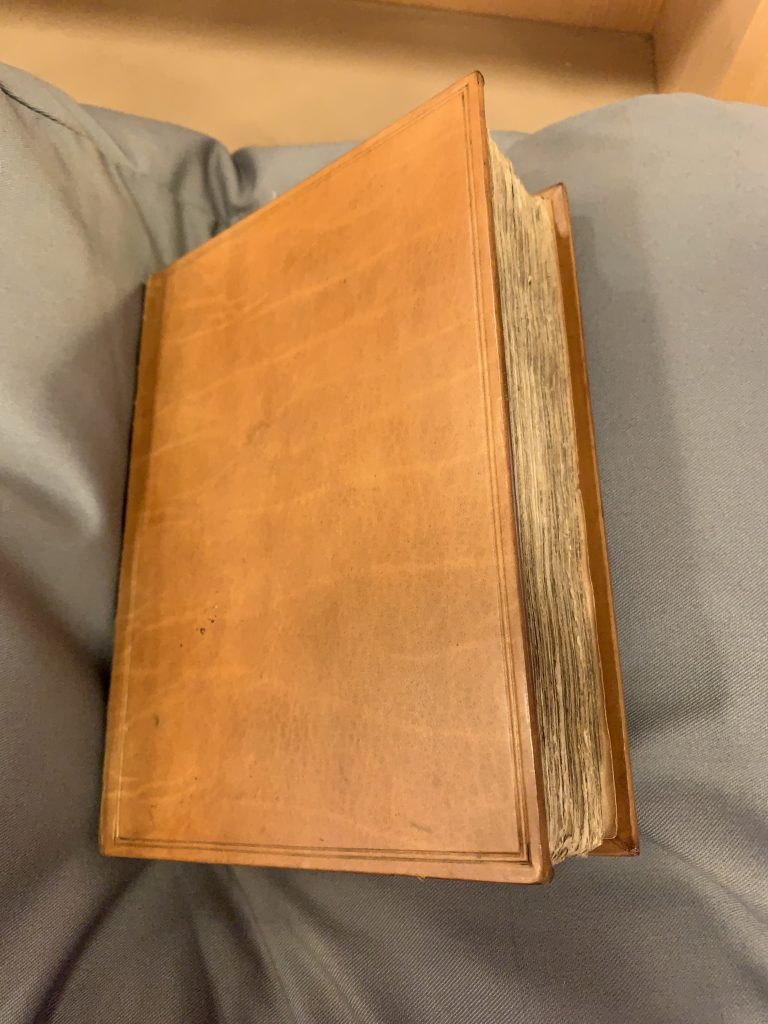
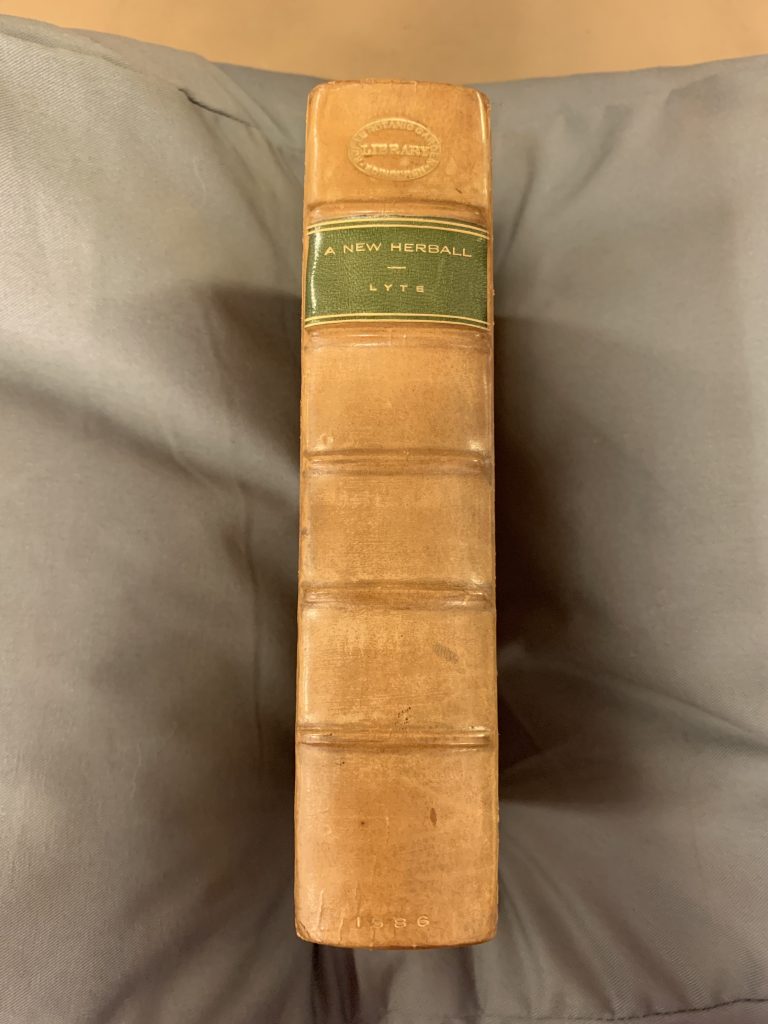
Originally published in 1554 by Rembert Dodoens, this particular edition of his Cruydeboeck (plant book) was translated into English by botanist and antiquary Henry Lyte, who translated from the 1557 French translation of the original Flemish text (‘First set foorth in the Douch or Almaigne toong, by that learned D. Rembert Dodoens, Physition to the Emperor: And now first translated out of French into English, by Henrie Lyte Esquier’).
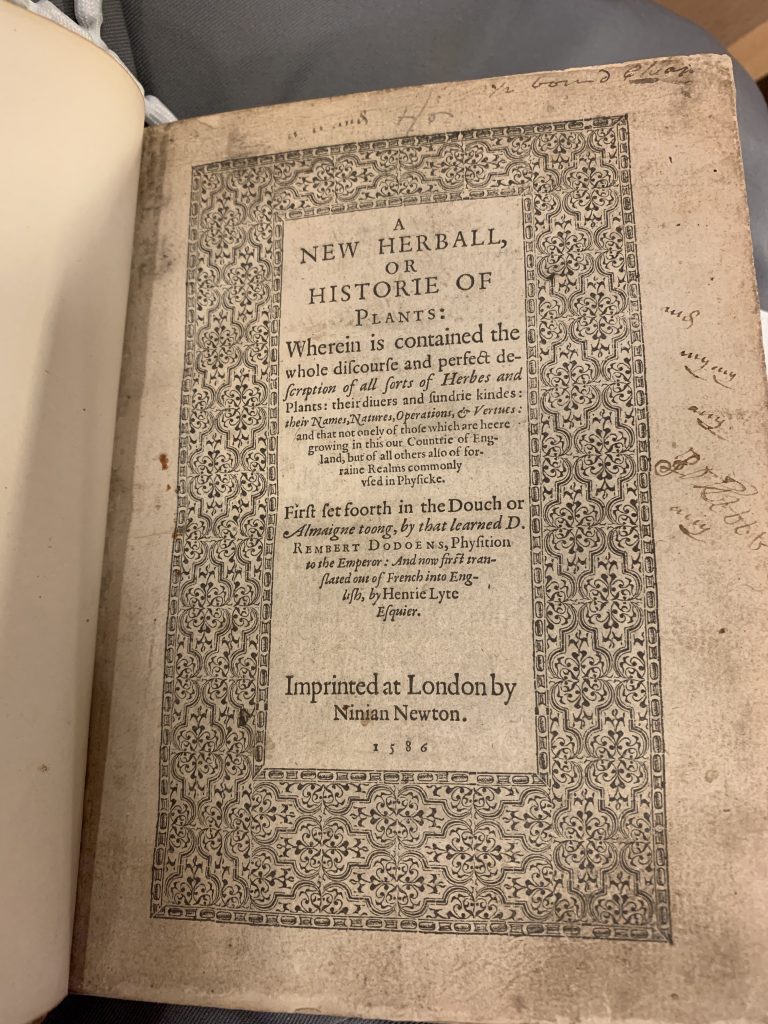
A New Herball, or Historie of Plants was published in multiple editions and various translations and it remained a widely used botanical guide for more than 200 years. Rather than emulating Leonhard Fuch’s work which organised plants alphabetically, Dodoens arranged his into the categories species, form, name, virtue, and temperament. Some editions of the book seem to contain woodcut illustrations, particularly earlier editions such as the 1578 A Nievve Herball, but the 1586 edition that I was looking at was not illustrated.
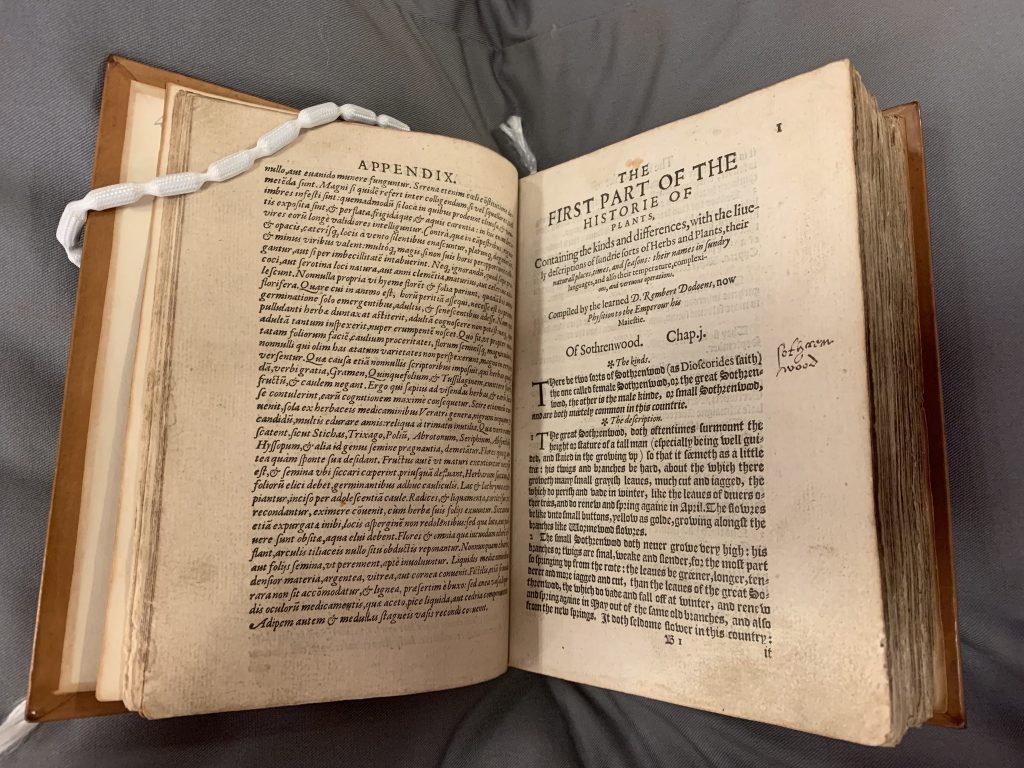
What was most interesting about this particular edition was the lengthy annotation written inside, as well as an annotation in the same handwriting above the Queen’s dedication which is possibly a signature of ownership. There are other light annotations throughout, including what appears to be someone testing their pen, but the different styles of script would suggest multiple owners and use over time.
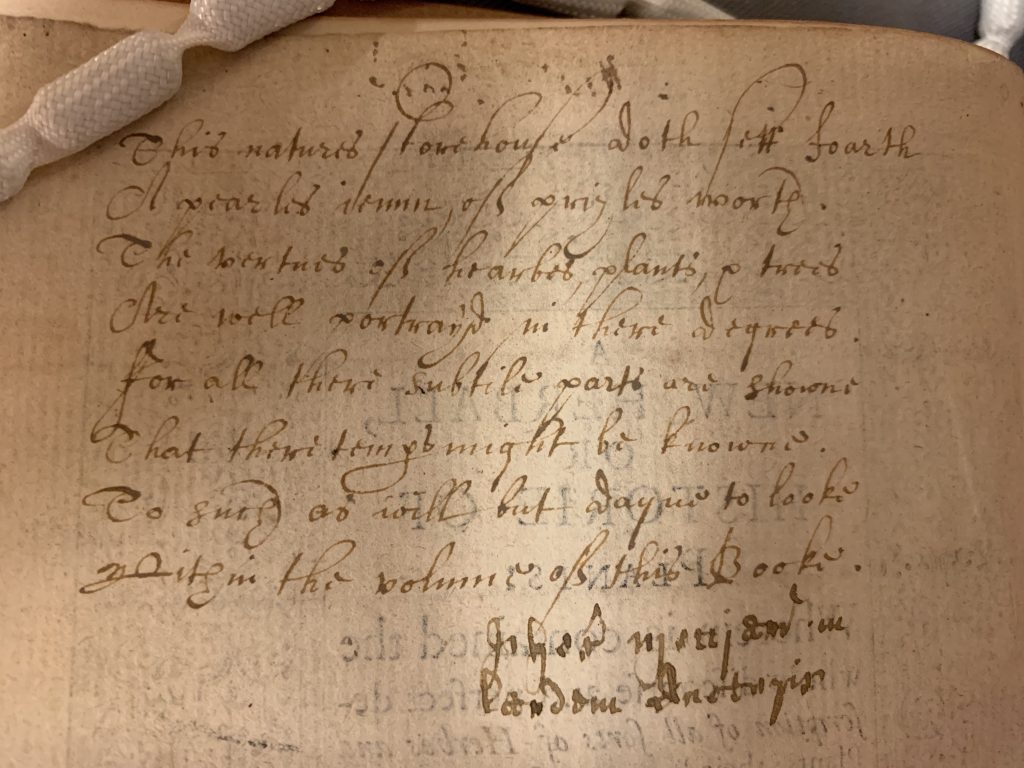
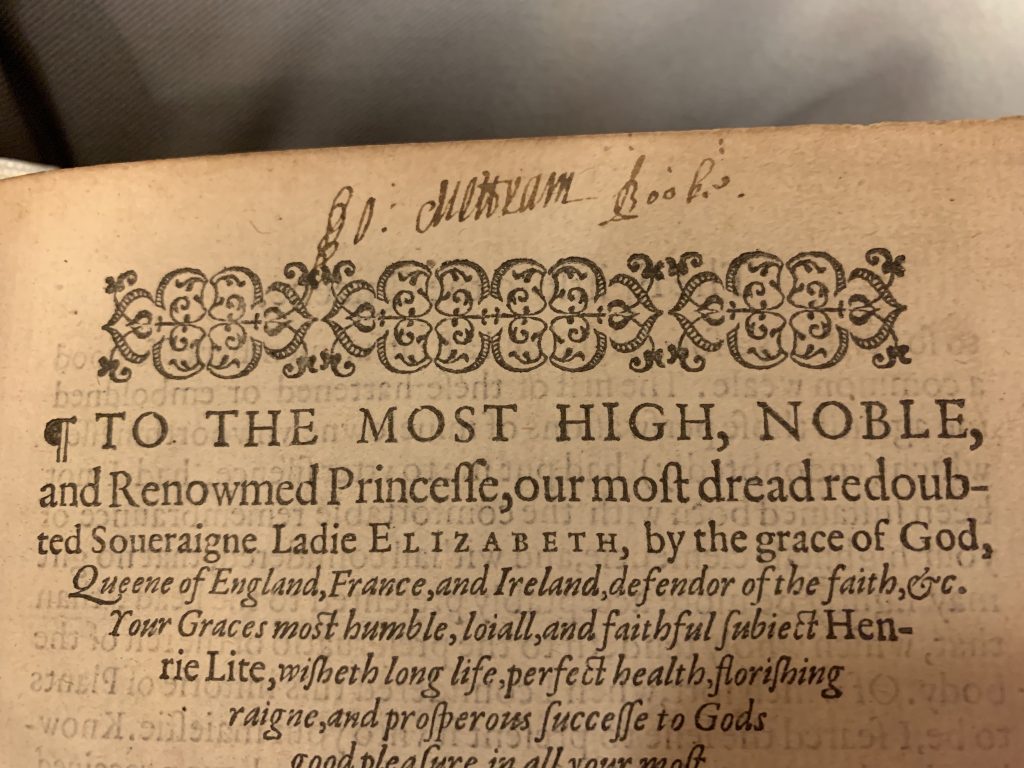
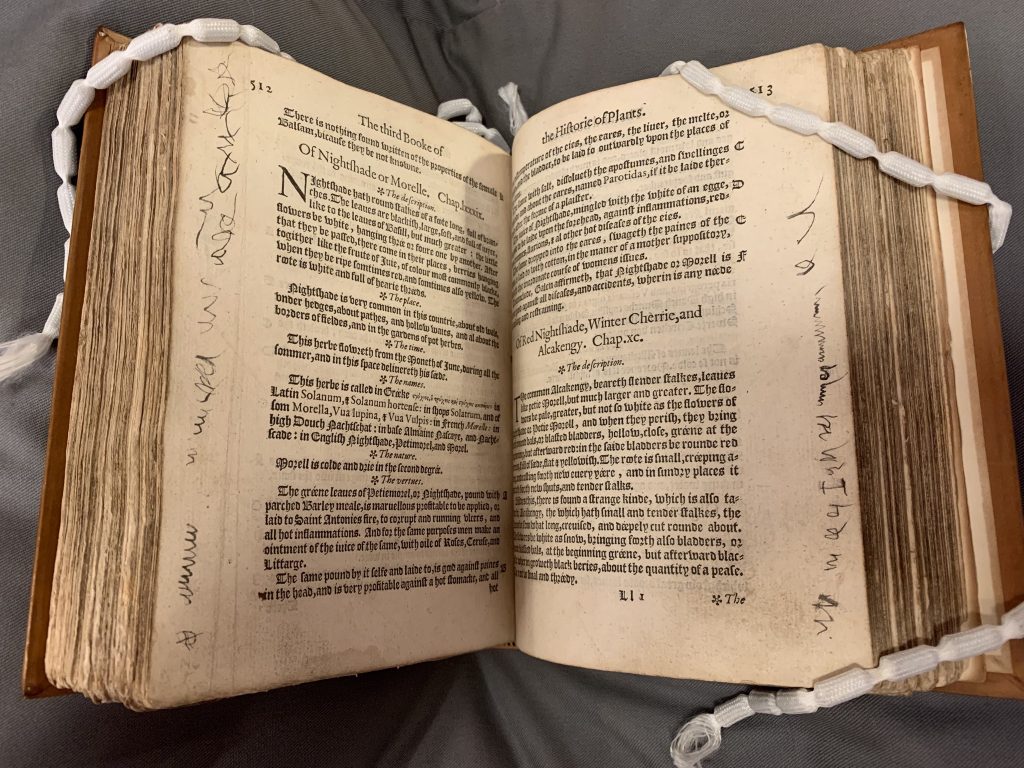
I thought that the larger annotation would provide a vital clue to figuring out the book’s provenance so, armed with a magnifying glass and a pictorial reference of the secretary hand alphabet, I set out to try and translate the text to gain more understanding of the mystery author. Foolishly assuming that I would solve the riddle before the end of the day and go on to reward myself with some chocolate, I immediately got stuck on the third word of the first line and quickly realised that this wouldn’t be as easy as I’d hoped. A simple and gentle approach was required, so I started off by plucking out familiar looking words in each line, such as nature, showne, knowne, looke, Booke, to have a rough idea of what I was looking at. I don’t have much experience with reading secretary hand and, as beautiful as it is with its elaborate swirling letters, it isn’t the easiest to look at and understand. After much squinting over the weekend, I had managed to solve fragments of the text before sending a photo I’d taken to a few friends who figured out the text even further, including a friend who has read many examples of this style of handwriting for his PhD and was happy to help. This is the end result:
This natures storehouse doth sitt foarth
A pearles iemm of prizlis worth
The vertues of harbes, plants and trees
Are well portrayd in there degrees
For all there subtile parts are showne
That there things might be knowne
To such as will but dayne to looke
Within the volume of this Booke.
Unfortunately, we have been unable to translate the last part beneath ‘volume of this booke’, so if anyone is able to help translate it or the smaller annotation above the Queen’s dedication, then please let me know as it would be a great help. Alternatively, if anyone has come across similar annotations like this in an edition of A New Herball or any other herbal from the sixteenth century, then it would be interesting to hear of these too.
If the final clues manage to get solved, then hopefully we can discover more about the book’s ownership during the 433 years since its publication, as well as discovering the author of such a wonderful and charming piece of verse.



Dan Weinstock
Above the Queen’s dedication: A flourish followed by the ownership name “D. Mottram” and then “Books”?
Karissa Adams
Ooh possibly, there’s been a few suggestions for the name before ‘Booke’ so I’ll need to try and research each one and see what I find. Thank you so much for your comment, it’s very helpful and hopefully we get answers eventually!
E. Denton
Johan(es) …???
London (???)
G(e)o(rge) Mettram Books(eller) ?
Karissa Adams
Thank you so much for your comment! I need to do some more digging around but I really appreciate any suggestions put forward. Hopefully the answers will become clearer eventually!
Cathy Wilson
Thanks for posting this lovely article. Since I read many historical books in researching genealogy. I’m seeing these as names. I am not a specialist by any means, but possibly above the Queen’s mention, is a O: Merryam books. ( Possibly owner is Merryam )
The names under the poem look like Dutch names. Johan Njottjam and Pardon Inetegis. I also had an ancestor that was an herbalist, but two hundred years later than this book. Loved the article!
Karissa Adams
Thank you for such kind words! I need to do more investigating but the information you’ve suggested is very helpful, I’ll let you know what I find. Who was your herbalist ancestor? 🙂